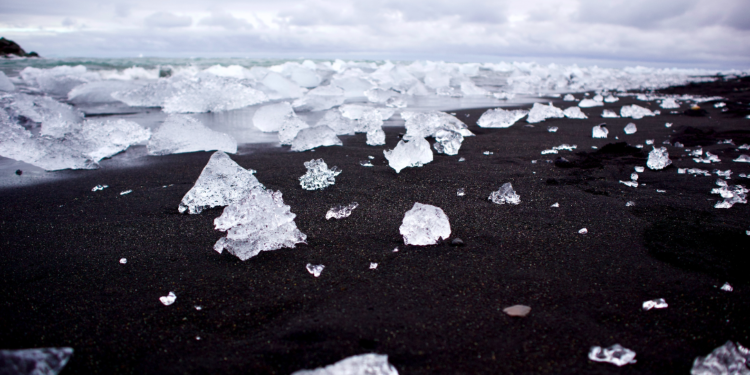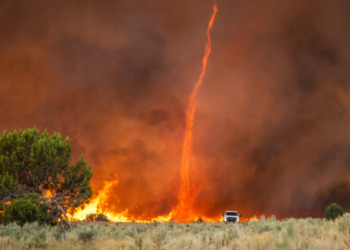Melting ice caps around the globe are causing sea levels to rise at an unprecedented rate, and although we knew the situation was bad, it turns out it’s even worse than we thought.
Not the best of starting points, but unfortunately, this is the matter at hand.
A new study by Dutch research firm Data for Sustainability, published in AGU’s Earth’s Future, is now suggesting that rising sea levels could in fact cover double the amount of land by the end of the century than previously estimated.
In short, sea levels are rising as a result of ice caps and glaciers melting due to higher global temperatures (induced by human activities on Earth).
There are currently 110 million people living on land that is below sea level. If sea levels rise by two meters, which current models estimate will happen by the year 2100, that figure could increase to 240 million.
According to current projections, however, the worst effects of rising sea levels won’t be felt until the seas have risen by several meters. What the new study now reveals is that these worst effects can be expected much sooner, and that the models we’ve been using so far have been largely inaccurate.
“In many regions the time available to prepare for increased exposure to flooding may be considerably less than assumed to date,” wrote the researchers.
How are the most vulnerable preparing for the rise in sea levels?
Climate change has specifically drastic effects on Small Island Developing States (SIDS).
However, places that fall into this category have put in unprecedented efforts to fulfil their sustainability goals, as many have already experienced first-hand what can happen if they don’t.
Projects such as SIDS lighthouse initiative have been helping to ramp up the use of sustainable energy on such islands in order to protect them.
Palau, an archipelago of 500 islands in the western Pacific Ocean, is one example, with their President Surangel S. Whipps Jr announcing the goal of having 45% of their energy coming from renewable sources in the next three years.
Prime Minister of Tonga, Siaosi Sovaleni, has said only 20% of the global funds are aimed at adaptation towards these rising sea levels and other effects from climate change that are hitting small islands so strongly. Meanwhile 80% go towards mitigation activities in the bigger developing countries, who are not so drastically affected.
At the SIDS event at this year’s IRENA Assembly, Director-General of the COP28 UAE Presidency Dr. Majid Al Suwaidi emphasized that it’s the smaller nations that need the significant funding in order to protect themselves, as they are the most vulnerable to the damages that climate change is causing.
The unfortunate news the Dutch study has now revealed is that scientists have underestimated how quickly sea levels are catching up with us.
It was previously thought that land would only be affected after several meters of increased sea levels, but it turns out just two meters could lead to devastating outcomes.
Related Articles: Contemporary Feminism at the Cybernetic Crossroads | Feminism Between Globalization and Tradition: The Rise of Aurat Marches in Pakistan | 10 Incredible Female Climate Activists You Should Know | March 8th & The Fashion Industry: International Women’s Day Is About Empowerment
Coastal cities in developed countries also find themselves in extreme vulnerability. After 2012 hurricane Sandy, New York for example invested $20 billion dollars into a “climate resilience plan” created to protect the city and its dwellers.
Projects include raised parklands and moveable floodgates.
Many other cities who find themselves lower than sea level, like Miami, Bangkok and Shanghai, also have protective measures in place.. Roads can be raised, reduced open spaces are a barrier to rain water and temporary flood panels are attached to buildings.
Over the past 50 years, climate-related disasters such as flooding, drought or heat waves have taken an average of 115 lives every single day – according to a WMO report.
So what’s gone wrong with scientists’ previous estimations?
Well, the extent of land areas that would be underwater after 1-2 meters of sea level rise has been grossly underestimated in previous studies due to their reliance on less-precise radar-based data.
“Radar [the old measurement method] is unable to fully penetrate vegetation and therefore overestimates surface elevation,” said Ronald Vernimmen, the study’s lead researcher.
The new measurements, on the other hand, used NASA’s ICeat-2 lidar satellite, which showed that the area of land that would be underwater after 1-2 meters of sea level rise would be twice as big as previously estimated.
This, in other words, means that there are more low coastal areas than previous data showed.
Bangkok, as mentioned earlier, is a city that sits in a vulnerable position. Whereas previous data suggested it was a safe place to be, the new discovery implies that a two meter increase in sea levels would put the entirety of Bangkok below sea level (not necessarily underwater, but at high risk).
Bangkok has a population of 10 million people. And of course, it’s not just Bangkok that will face critical situations like this.
How soon will this happen?
It is currently estimated that sea levels will have risen by two meters by the year 2100. If things continue as they are now, our sea levels could reach as high as five meters by 2300.
However, all this depends on whether we can decarbonise the economy in time, slow down or ideally reverse climate change, and hit the net-zero targets in aid of saving the planet.
If global warming can be reduced to a 2°C increase by the end of the century, sea levels would only rise by 0.3–0.6 meters by 2100.
And even if countries hit the targets they pledged to, the average global temperature would increase by 2.7°C by 2100. If we are to limit global warming to 2°C by the end of the century, not only must more be done to achieve present targets, but more ambitious and urgent targets might be needed, too.
Editor’s Note: The opinions expressed here by the authors are their own, not those of Impakter.com — In the Featured Photo: Ice melting and causing sea levels to rise. Featured Photo Credit: Markus Partoll.









